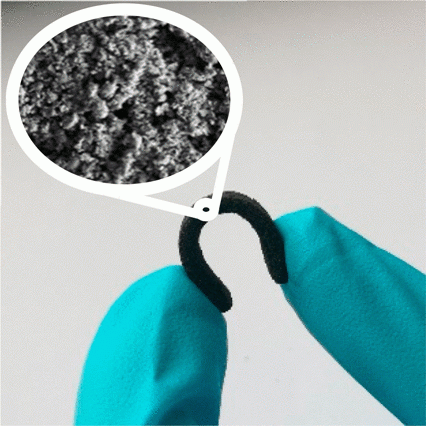Selective laser sintering (SLS) 3D printing was utilized to fabricate highly porous carbonous electrodes. The electrodes were prepared by using a mixture of fine graphite powder and either polyamide-12, polystyrene, or polyurethane polymer powder as SLS printing material. During the printing process the graphite powder was dispersed uniformly on the supporting polymer matrix. Graphite’s concentration in the mixture was varied between 5 and 40 wt % to find the correlation between the carbon content and conductivity. The graphite concentration, polymer matrix, and printing conditions all had an impact on the final conductivity.
Due to the SLS printing technique, all the 3D printed electrodes were highly porous. By using polyurethane as the supporting matrix it was possible to produce flexible electrodes in which the conductivity is sensitive to pressure and mechanical stress. Physical properties such as graphite distribution, attachment, and the overall porosity of the printed electrodes were studied using scanning electron microscopy (SEM), helium ion microscopy (HIM), and X-ray tomography. The results show that the combination of chemical design of the printing material and the utilization of SLS 3D printing enables fabrication of highly customizable electrodes with desired chemical, physical, mechanical, and flow-through properties.
Machine used : Sharebot Snowwhite
Source : www.pubs.acs.org

